The 6th generation (6G) is the next step on the path to future mobile communications standards. The introduction of high-frequency bands such as the D-band (110 – 170 GHz) should enable even faster data transmission.
However, using the subTHz range creates new problems for researchers, such as increasing free-space attenuation or signal-blocking structures. To overcome these, researchers are working on new technologies – including RIS (»Reconfigurable Intelligent Surfaces«).
Robert Stöcker, a research associate at Fraunhofer IZM, and his team have developed a static RIS prototype. Based on established antenna structures like reflect array antennas, they are investigating the use of RIS for 6G, the future implementation of switchable elements, and new prospects for measurement technology for high-frequency elements.
RIS technology: the key to overcoming 6G challenges
Ever since mobile communication was first introduced, work has never stopped to keep the technology evolving. Over 40 years have passed since its first generation (1G) to the current fifth generation (5G). While 1G and 2G focused on voice communication, data services and mobile internet access were added with the introduction of the third mobile communications standard (3G). 4G was further optimized for private use. 5G is designed for applications with even higher data rates, such as machine-to-machine communication or the Internet of Things (IoT).
6G is all about things like immersive applications (eXtreme Reality (XR)) or digital twins for the Industrial Internet of Things (IIoT). However, it also opens up new possibilities for applications like telemedicine and telesurgery, smart cities, or the expansion of artificial intelligence (AI) and virtual reality (VR).
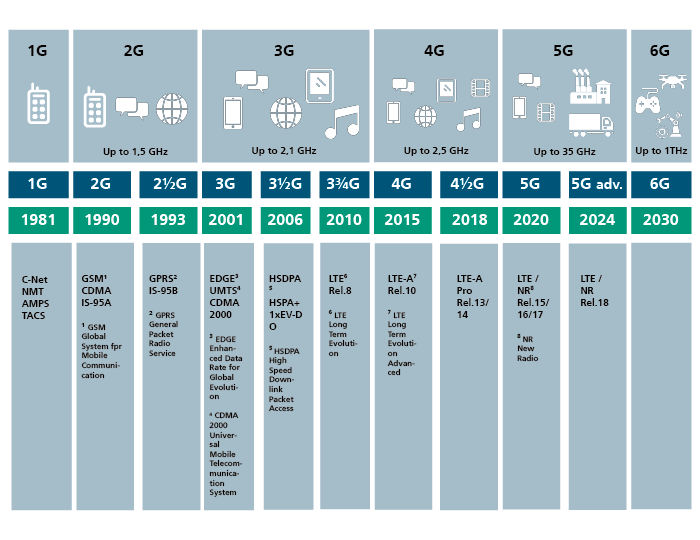
The evolution of mobile communications from 1G to 6G | © Fraunhofer IZM based on »On the Road to 6G: Drivers, Challengers and Enabling Technologies« Fraunhofer Gesellschaft
One important leap ahead for the development of mobile communications standards is the introduction of larger frequency ranges, which enable even faster data transmission and lower latency. 4G operates in the sub-6 GHz range with speeds of up to 1,000 megabits/second and a latency of 5 milliseconds. 5G, by comparison, uses the millimeter wave range with speeds of up to 20 gigabits/second and a latency of 1 millisecond. For 6G, a speed of one terabit/second and a latency of around 100 microseconds is realistic.
To enable that leap to 6G and beyond, one key problem has to be overcome: The radio frequencies used by 6G are affected by both urban and rural environments. In urban areas, radio waves can be scattered by obstacles like high-rise buildings, while in rural areas, its short range can be a limiting factor, as radio waves quickly lose their energy in the air and can only travel a few meters. In order to implement 6G effectively, we therefore need either the mass dissemination of base stations to make up for the smaller mobile radio cells and the increasing demand for more access. Or we need a technology that complements the existing communication network infrastructure and can be used more flexibly.
Researchers are working on technologies to compensate for these weaknesses. One potential solution is RIS. The abbreviation stands for »Reconfigurable Intelligent Surfaces«, but sometimes the terms »Intelligent Reflecting Surfaces« (IRS) or »Large Intelligent Surfaces« (LIS) are also used.
Intelligent interfaces: How RIS can change wireless communication
RIS are an array of reflective elements used to reconfigure an incoming signal. In addition, they can proactively change the wireless communication environment by attenuating the strong effects of free space attenuation. RIS can manipulate electromagnetic waves by controlling the surface of the RIS to customize the angle at which beams hit the surface, a level of control and reconfigurability achieved by hardware means.
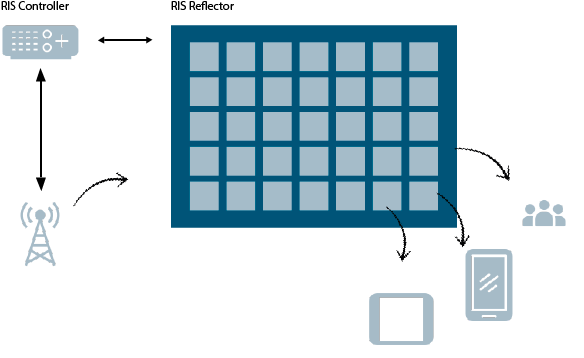
With the help of an RIS, radio signals can be forwarded from the base station regardless of their location, as their switchability allows new levels of versatility. | © Fraunhofer IZM based on »On the Road to 6G: Drivers, Challengers and Enabling Technologies« Fraunhofer-Gesellschaft
RIS consist of hundreds or thousands of individual elements referred to as small or single cells. The cells contain metallic and dielectric layers together with one or more switches or other tunable components. By controlling the bias voltage, each individual cell can be switched on or off or controlled. This makes it possible to change the phase and other characteristics of the incoming wave.
These components can be easily applied to many structures, including house facades, interior walls, billboards, car windows, even clothing. They are also more energy efficient than AF (amplify-and-foward) and DF (decode-and-forward) systems, as RIS means that the incoming signal is shaped by controlling the phase shift of each reflective element, rather than having to use a power amplifier.
From prototypes to future technology: The challenges and potential of RIS in 6G communication
The potential of RIS is fascinating 6G researchers, even though the development of RIS technologies is still in its infancy. To speed up the development process, scientists are drawing on past research. Reflect array antennas are a promising starting point. The technology is well-known and offers a solid starting point for the development of RIS due to the similar fundamental properties.
A reflect array consists of a feed element and a flat surface. This surface can change the phase of the reflected field and vary it over its surface. In this way, a flat surface can become a focused reflected field.
Robert Stöcker’s research as part of the 6G-RIC project focuses on the development of RIS for 6G communication networks at 150 GHz. A prototype is being developed at Fraunhofer IZM to prove that scaling up to 150 GHz is possible using PCB technologies. The surface of the reflect array antenna consists of a total of approx. 52,000 patches on an area of only approx. 13 x 13 centimeters. At an angle of incidence of 60°, the array achieves a beam angle of 0°.
»The prototype is a proof of concept and shows that it is possible to use and scale up the RIS technology. It also serves to level up measurement technology for high-frequency components with measurements in the RF range. This is important because RIS technologies that would be interesting to industry cannot yet be characterized,« explains Robert Stöcker. »At Fraunhofer IZM, we have a special measuring chamber in which we can measure and test radiation fields in the near and far field up to 300 GHz in a sphere shape (radiation). We have tested and modified the static RIS prototype that we developed in the 6G-RIC project in our measurement chamber. Next, we plan to produce an intelligent RIS prototype. That prototype should be able to switch and change its surface.«
Left: Measurements up to 300 GHz can be carried out in the Fraunhofer IZM measurement chamber. | © Fraunhofer IZM | Volker Mai
Right: Cross-section drawing of the RIS prototype. | © Fraunhofer IZM
This switchability of the surface is one aspect that distinguishes reflect arrays from RIS. Reflect array antennas are positioned in a fixed geometric relationship to the antenna. They amplify or transmit the signal due to their specific positioning and the angles of the signal’s input and output. By contrast, RIS can be mounted independent of the antenna. This is the biggest advantage of this technology: RIS will be able to shape and forward signals coming from any direction, as required for the corresponding application.
In cooperation with Fraunhofer ILS and other partners, the 6G-SENTINEL research project is working on a liquid crystal-based, static reflector prototype for localization applications using 6G. Integrating these liquid crystals overcomes certain problems faced by diode-based reflectors. Since the interconnects (solder joints) of the diodes show first parasitic properties at around 50 GHz, liquid crystal technology is becoming important as a key technology for higher wavebands – and thus for 6G. They can also be used more flexibly, which can facilitate module planning for reflect array antennas.
From theory to practice: from static prototypes to switchable modules
However, the great potential of RIS comes at a cost: The researchers at Fraunhofer IZM see problems with integration into existing communication networks, particularly when it comes to modulating signals that interact with RIS. However, the responsibility for implementation and switching, i.e. who ultimately monitors and controls the RIS, are also important issues that need to be addressed more precisely in future.
It will be several years before 6G becomes a reality. But with the current state of research, the researchers seem to be well on their way. »We are continuing to develop the prototype for the 6G-RIC project, because we want to be able to reconfigure it going forward. We will also test the prototype in communication networks to see how modulation changes actually behave. In a further step, we will then create a switchable module,« says Stöcker about the next milestones ahead.
The 6G Research and Innovation Cluster (6G-RIC) is a research center that aims to lay the scientific and technical foundations for the next generation of mobile communications (6G) at all technology levels, from radio access to core networks and fiber optic transport networks.
6G-RIC is an interdisciplinary and coordinated collaboration of a total of 32 research groups from 20 universities and research institutions, supported by over 60 associate partners from academia, industry, and the public sector.
The center is funded by the Federal Ministry of Education and Research (BMBF) as part of the »Souverän. Digital. Networked.« program. Fraunhofer IZM is working on the influence of high-frequency waves for the 6th generation of mobile communications, specifically on interactions in both the package and the radio channel. The aim is to develop specially designed metasurfaces to control wave propagation.
Duration: August 2021 – July 2025
Project website: https://6g-ric.de/
In the 6G SENTINEL project, five Fraunhofer Institutes involved are developing key technologies for the upcoming 6G mobile communications standard. They are working on further improving the data rates, availability, accuracy, service quality, and reliability of mobile communications. In addition to the consistent further development of existing 5G technologies, the focus is also on completely new approaches. The primary objectives are the development of terahertz frequencies and technology development for more flexible networks.
Fraunhofer Key Project
Duration: January 2021 – December 2023
Fraunhofer Institutes involved: Fraunhofer IIS (coordinator); Fraunhofer HHI; Fraunhofer FOKUS; Fraunhofer IAF; Fraunhofer IZM

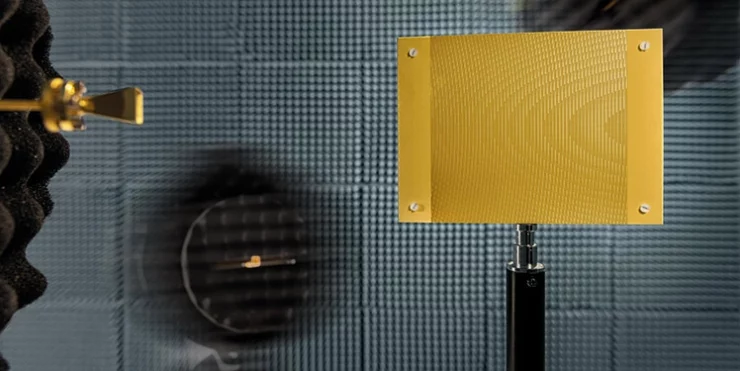
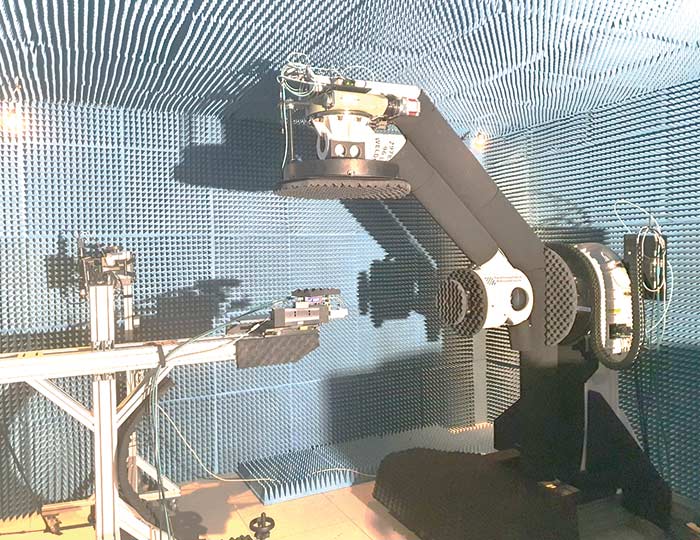
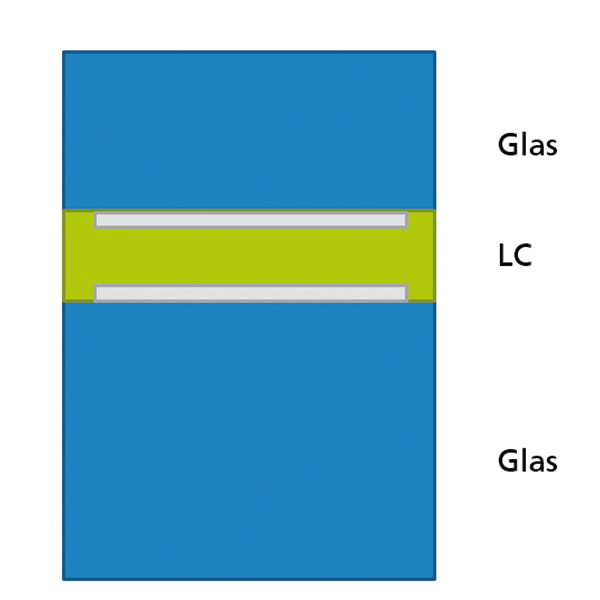



Add comment